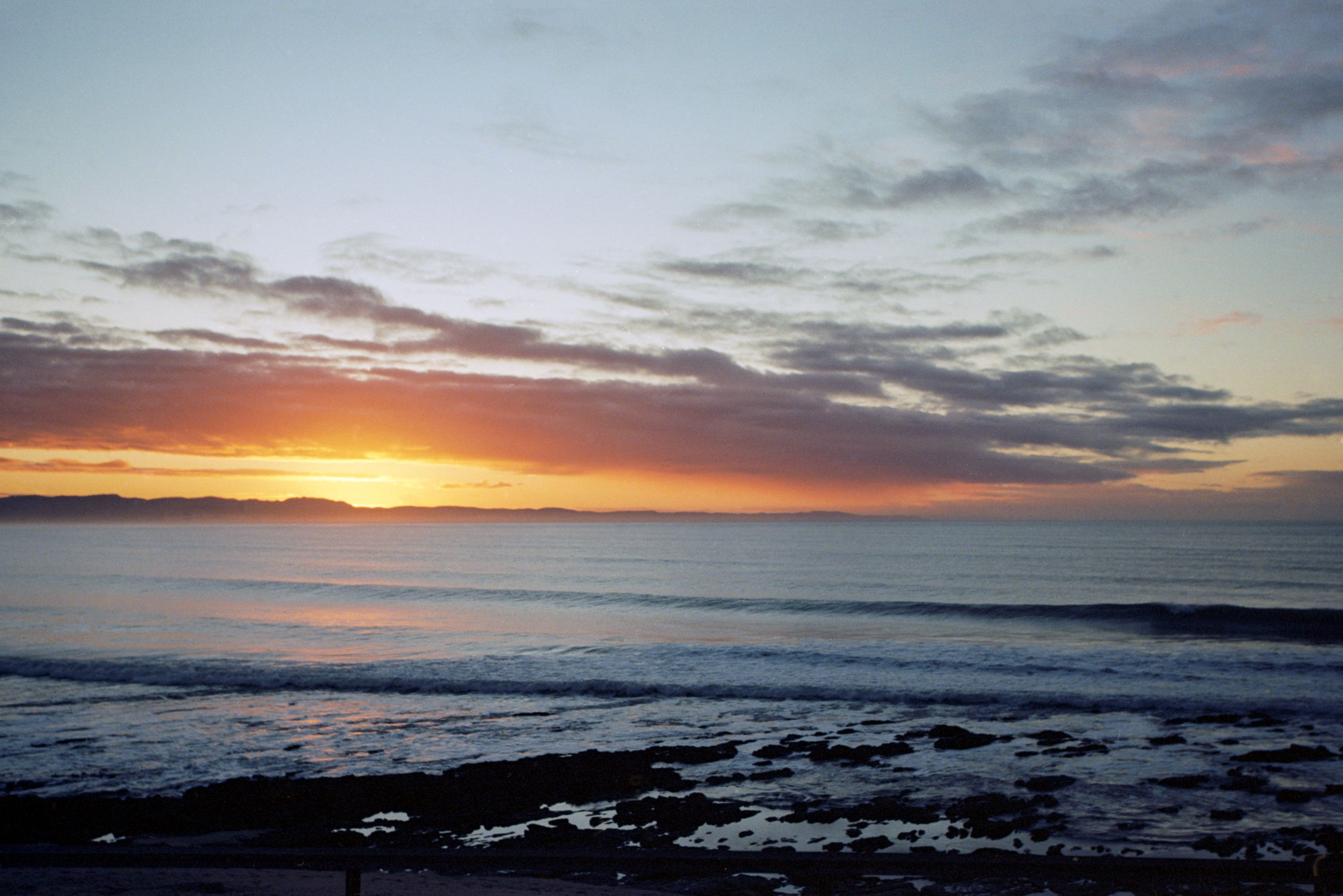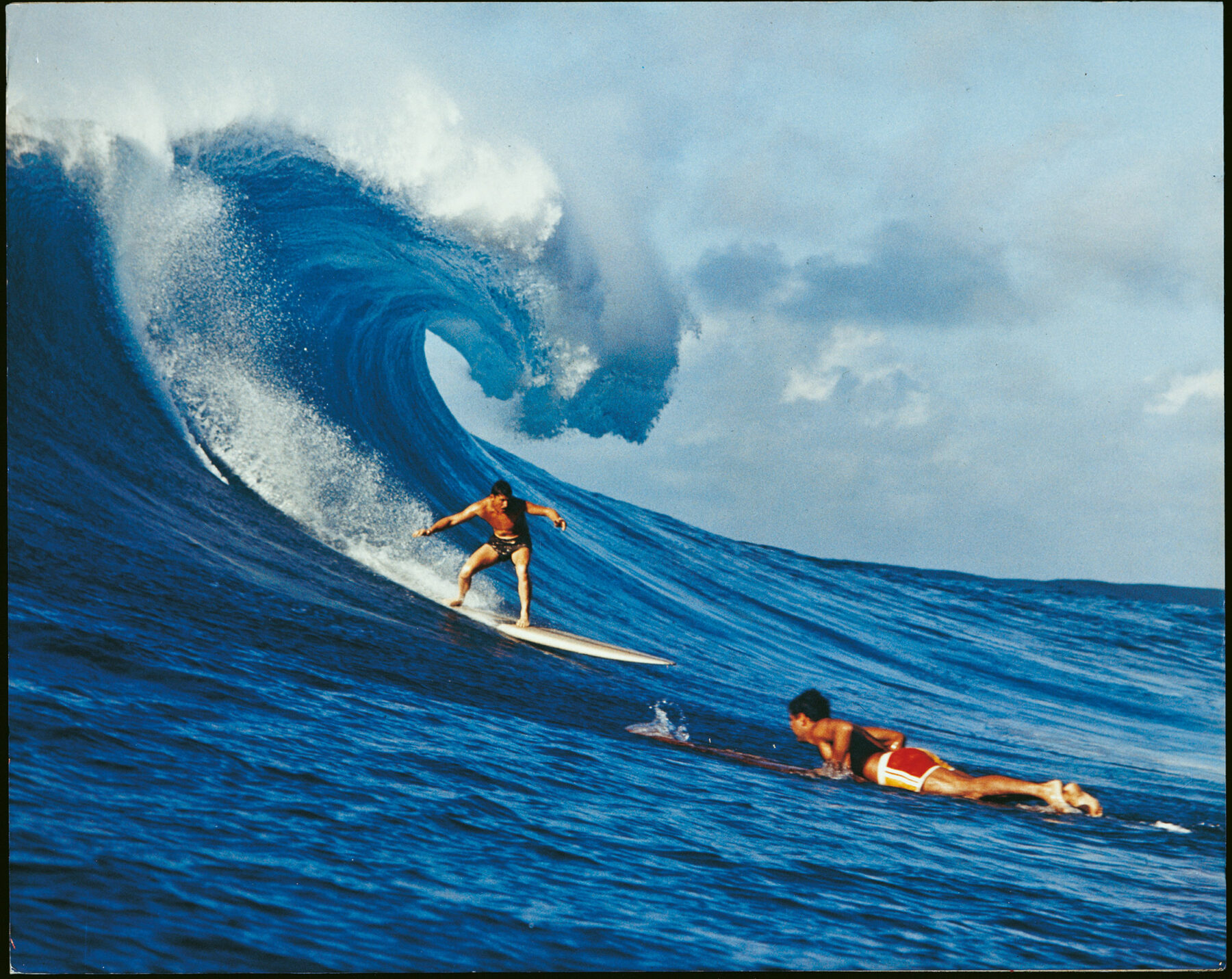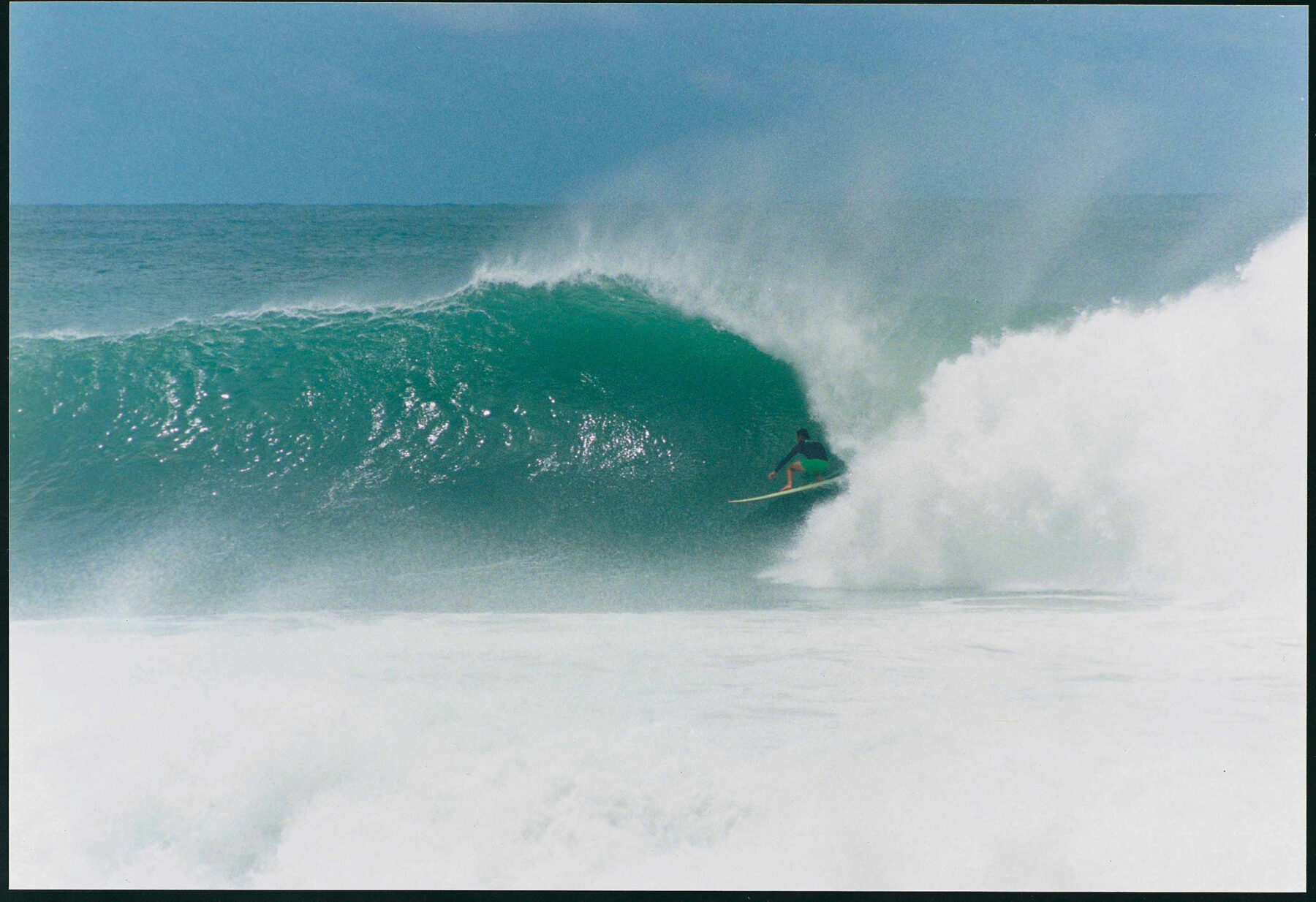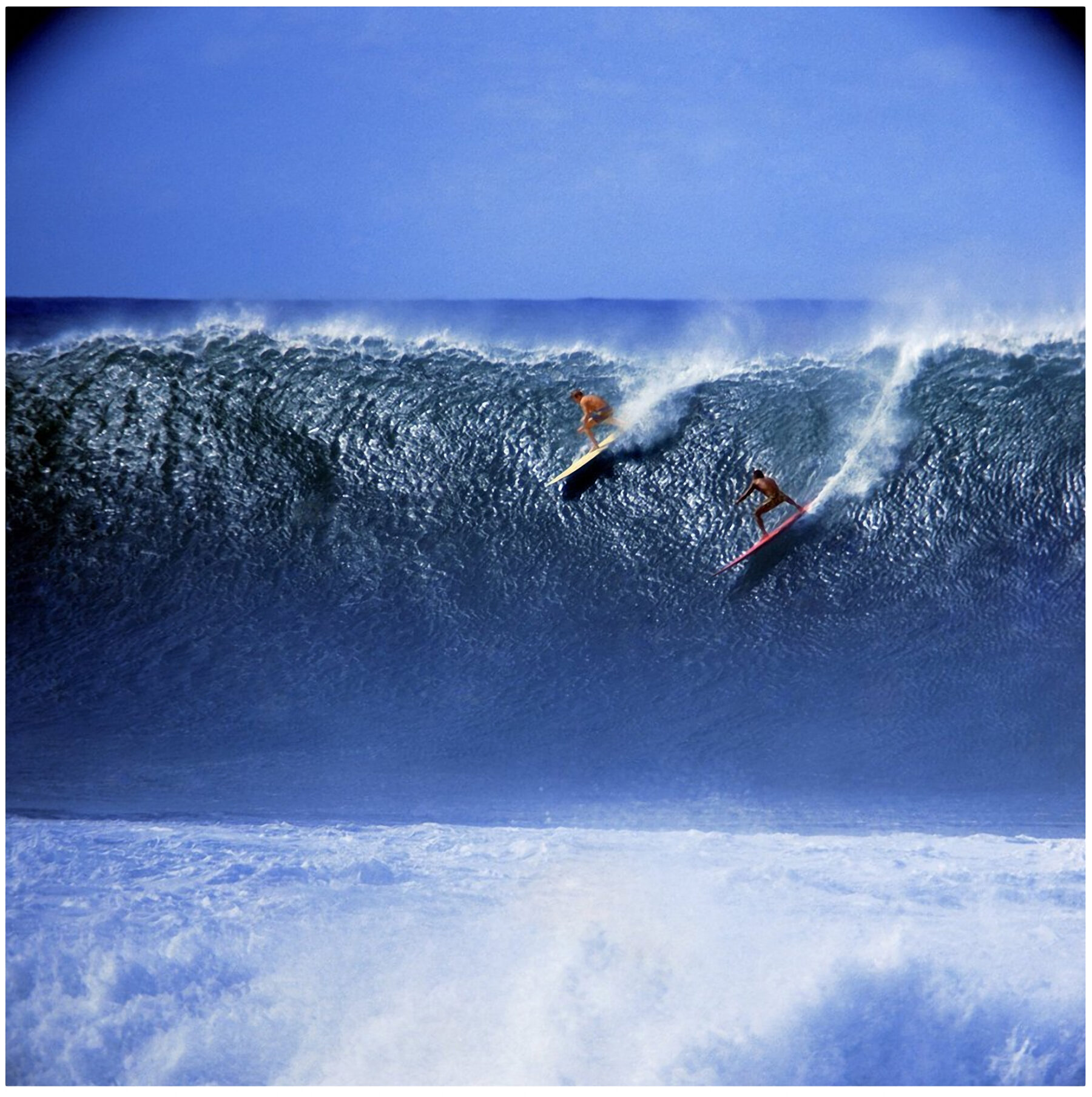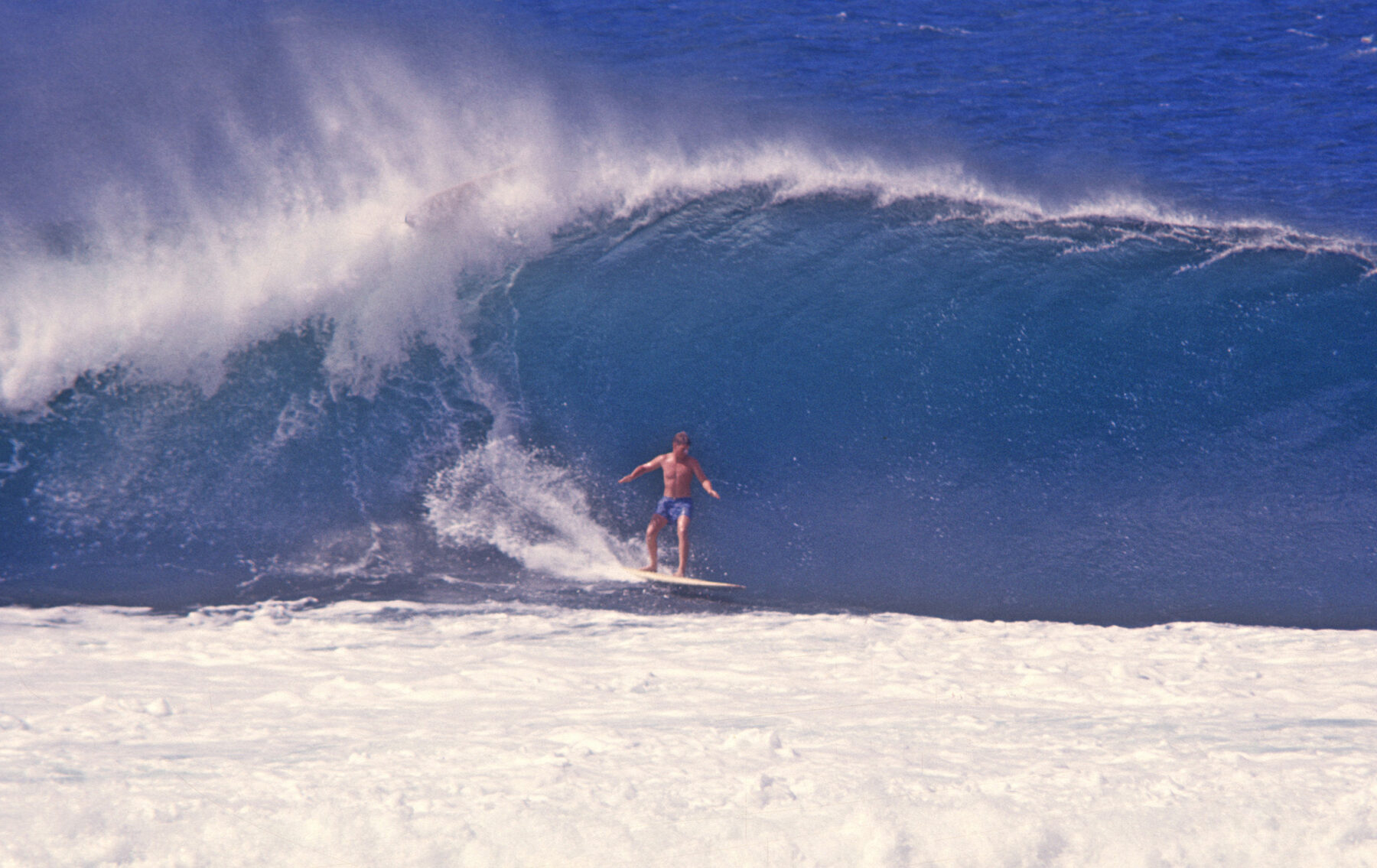There’s a class of people in the Indigenous communities of Western Australia known locally as ‘the history men.’ These are figures from an older generation who hold a profound amount of knowledge in the community. They’re highly respected and a source of great information. In a similar vein, Rusty Miller and Derek Hynd are the history men of surfing.
Leaders in the art of surfing and known for their unique style, the pair have accumulated decades of knowledge on the history of surfing. Rusty was one of Hawaii’s legendary surfers, a renowned big wave surfer in the ’60s and ’70s and a weighty influence on many to come after him. Derek has traversed a varied terrain, from his early success in competitive surfing to his current focus on Far Field Free Friction: redesigning boards without fins and therefore completely altering the approach to wave riding—an incredibly difficult pursuit of which he undoubtedly is the leading figure.
Discussing memorable moments in surf history
While it would be easy to imagine the pair at some quiet Australian pub recounting the earlier era they were a crucial part of, they’ve both decided to remain continually engaged in the surf community—Rusty still teaches people how to surf in Byron Bay and Derek continues to push different angles of what it means to surf with his friction free surfing ideology. Speaking from Rusty’s porch, their conversation meanders through decades in surfing’s history and enlightening not only how we look at the past but what it means to be alive and surfing today.
“I got one wave that was so nice I was standing there and I couldn’t figure out what to do. It was a machine wave. Just so perfect.”
-
Derek and Rusty, how would you describe each other?
Derek: Rusty was one of the top 10 surfers in Hawaii through the entire 1960s, in the 1970s he fell into Australia at the perfect moment when the Left was respectfully moving forward, but as the years have moved beyond that, and despite retaining incredible physical stamina, still surfing blinders, he finds himself increasingly redundant in modern Australia [laughs] due to it being the most conservative country on the planet! And he’s a great thinker. Rusty?
Rusty: Ok… Derek. I can’t really remember when I first met you, but I did know Derek through his writing in various publications, and I didn’t know he did it but he conceived and executed the original ‘searching for surf’ [travels to far off places looking for surf] into a corporate body called Rip Curl and introduced that concept of taking free surfers out of competition. I’ve always paid attention to his writings, and although they were about professional surfing, there was something a little bit deeper about them. When I started coming into direct contact with him I realized that he was one of our most articulate literary figures relative to what the true spirit of surfing is—in the spirit of cynicism that comes to surfers from being surfers. One product of that of course is his persistence in being a founding father of frictionless surfing. Well not a founding father but… Re-turning to the frictionless surfer from the old!
D: The key to being not too jaded, from my own experience of the 1980s, was that it was still an exploratory sport. The ’90s brought about a standardization of surfboards, what is colloquially termed ‘the potato crisp surfboard’—very low elements of drive, very low buoyancy—a small man’s game. When retro performance started coming in, I saw people weren’t picking up retro boards as they should. They were turning them into hybrid boards or thrusters, which pissed me off and still pisses me off to no end today.
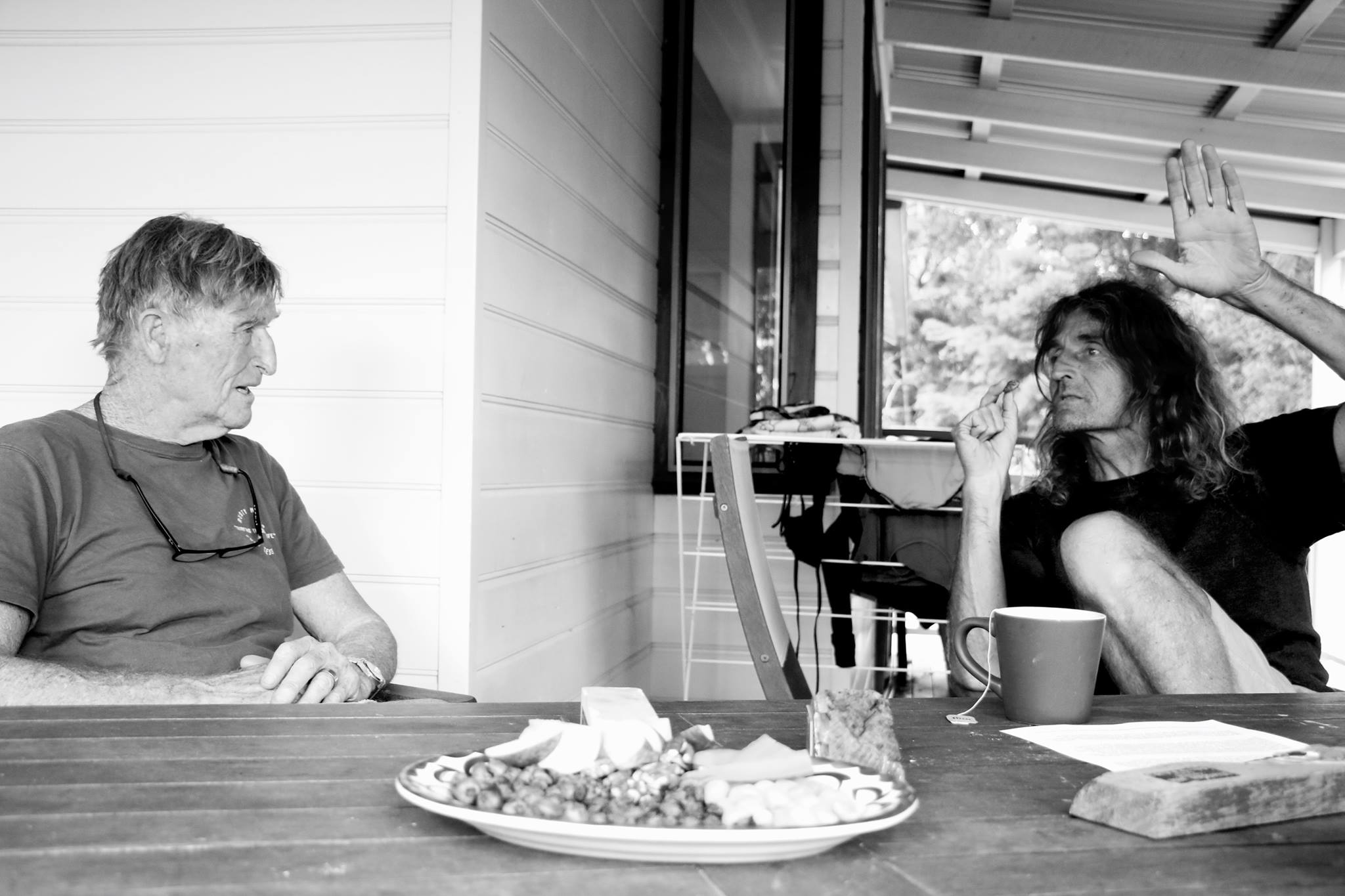
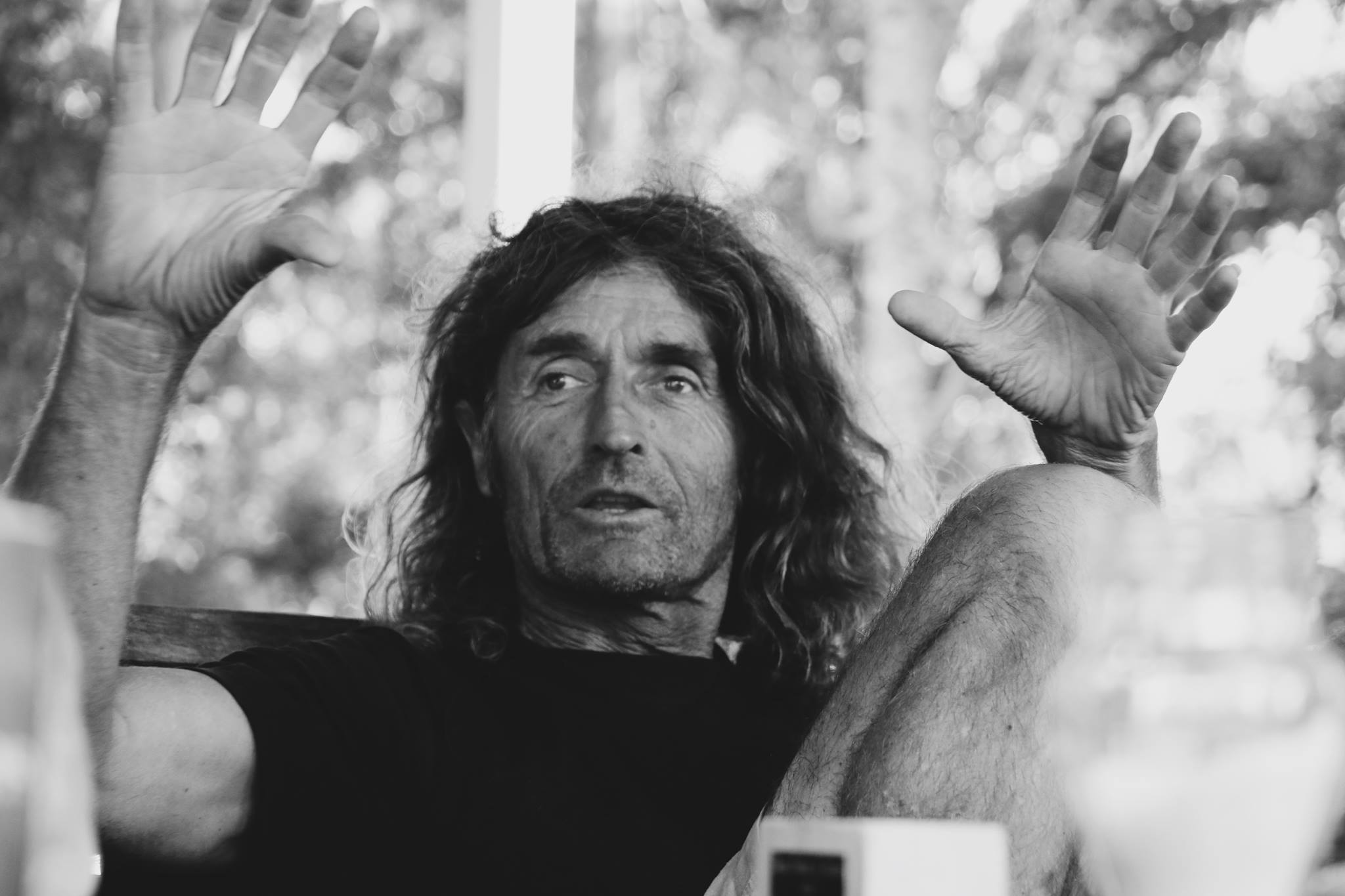
-
R: What do you mean by that?
D: No-one goes back to address the original Skip Frye and Steve Lis fish as it was originally planned out. They make a difficult surfboard easy—much like Tom Blake when he dumped that Missouri keel boat skeg on the bottom and said, ‘Go for it’. So, to cut a very long-winded story down, I got rid of all my fins because I knew that very few surfers would want to chase that tail. They don’t have the application—without trying to modify it and to pursue it all the way down the line. And still, to this day, there’s only about two to three surfers who have got rid of the fins and are pursuing it, just as a different application.
R: It’s a hard one and I admire that, Derek. It’s a hard one to stick, too. Because first of all it takes a lot of time, energy and discipline to be able to ride a board with no fins and make the wave, make sure that edge is in, and project… but once you see the release, what I call its warp stage, just releasing, it’s incredible
D: Rusty is an interesting specimen because he came through every design shift. One of the most important being the ‘fuck off bottom turn’, eh Rusty? That early ’70s or late ’60s, early ’70s ‘fuck off bottom turn’ [FOBT] where you put that rail over so the fin was totally exposed and it was basically just the rail driving it. There were only a few people who did the FOBT and you were one of them, Rusty. Alongside Jeff Hackman, BK [Barry Kanaiaupuni], too.
R: Thank you! I’ll take that!
Rusty surfing at Lennox Head. Photo by Hilton Dawe (2013).
-
Tell us about a period in your lives that stands out as a wonderful time to be alive, as a surfer, one that may never reappear…
R: At the beginning of this year, January 1st, the perfect swell came in. The banks at Broken [Broken Head, NSW] were exceptional. As good as I’ve ever seen Broken. It was very crowded but the swell was perfectly aligned to come into Broken, and the bank was absolutely perfect- like razor sharp from the outside all the way in…I got one wave that was so nice I was standing there and I couldn’t figure out what to do ‘cause there was no adjustment needed in what I was doing. I just had this trim. It was a machine wave. Just so perfect. And not only that but the sun was out and it was transparent. And that was just the beginning of the year! In surfing you have these reappearances of moments which you cannot predict or assume, so I try to be very careful when I go out surfing and not go out expecting things, right? There’s no such thing as perfect, but that wave was everything that I could imagine. The wave was so transparent I couldn’t see the wave.
D: For me, it was maybe about two years ago, I was standing on just about a dry river bed in Nova Scotia, Canada, waiting for the tidal bore to come in. It was in the middle of farmlands, very cold weather, very muddy because you have to slide down the 20ft mud bank, and I’m standing on a flat bit of sand where there’s just a tiny depth of gully spanning about 30 meters. I was hearing a noise that was maybe a kilometer away, and it’s knocking into the bank and it’s coming around the bend. And as the huge wall of foam comes round the bend and I’m still kinda standing at this point until all of a sudden I’m running – running as fast as I can towards that wall of foam, trying to find that harder packed sand next to the divot, knowing that soon enough there’ll be a peeling righthander if only I can jump into the foam at exactly the right spot and not miss the wave. Getting to your feet just in time to perform a crucial turn into what will become a section that could go for 500 yards. So completely unsure but completely ecstatic. Knowing that it’s a 50/50 gambit and I might be stuck a meter or two in the foam watching a peeling righthander go for those 500 meters and there’s nothing I can do, I can’t run in front of it, it’s just one wave as the back waves are too turbulent. And if you miss that wave you’ve got another 12 hours 20 minutes to wait until the next one and it’ll be in the middle of the night. And sometimes you find yourself in that river in the middle of the night unable to help yourself going, ‘I’ll do it anyway’! That’s something that is so romantic. The gamble of not knowing whether it’ll be heaven or hell when that wall of foam comes towards you.
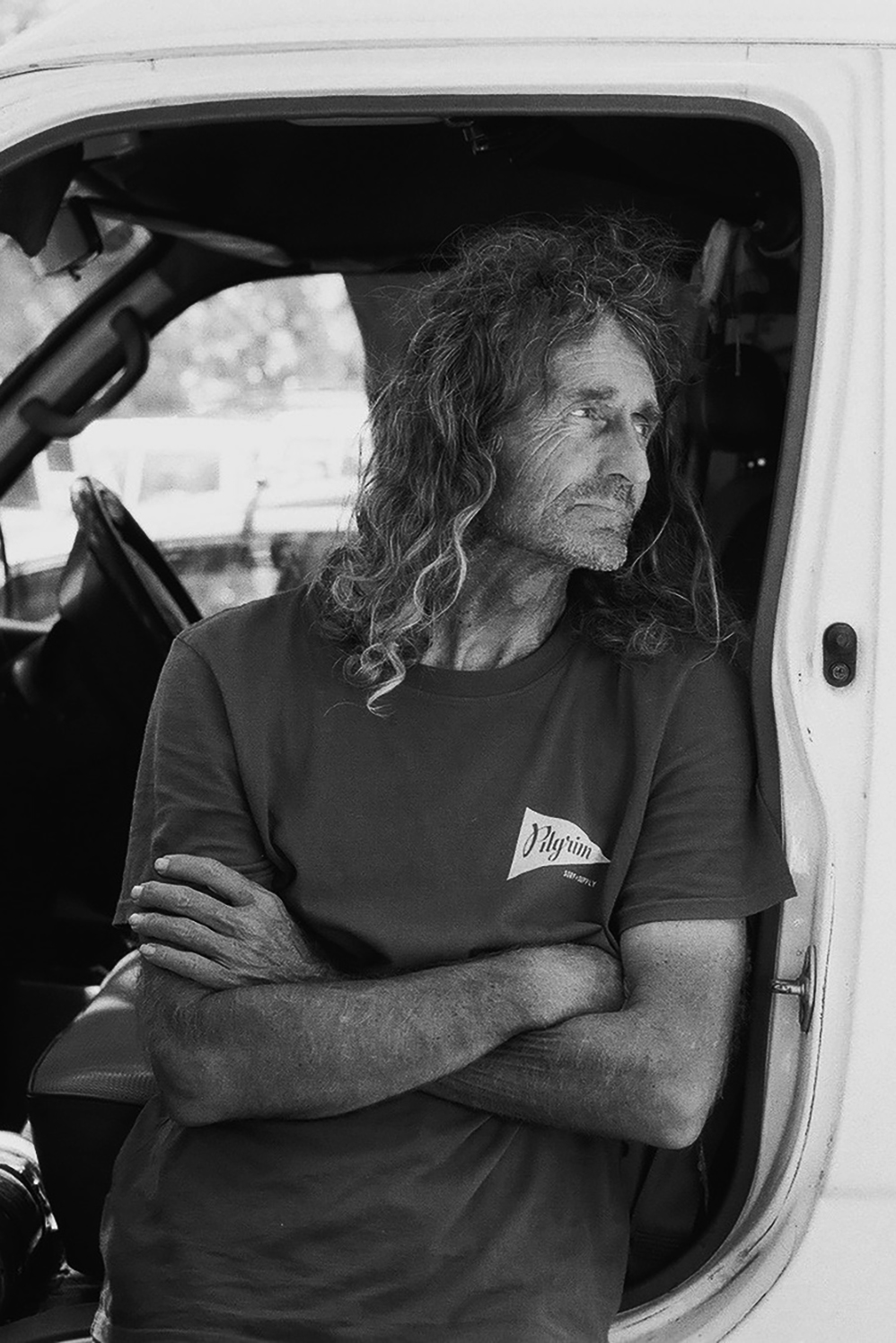
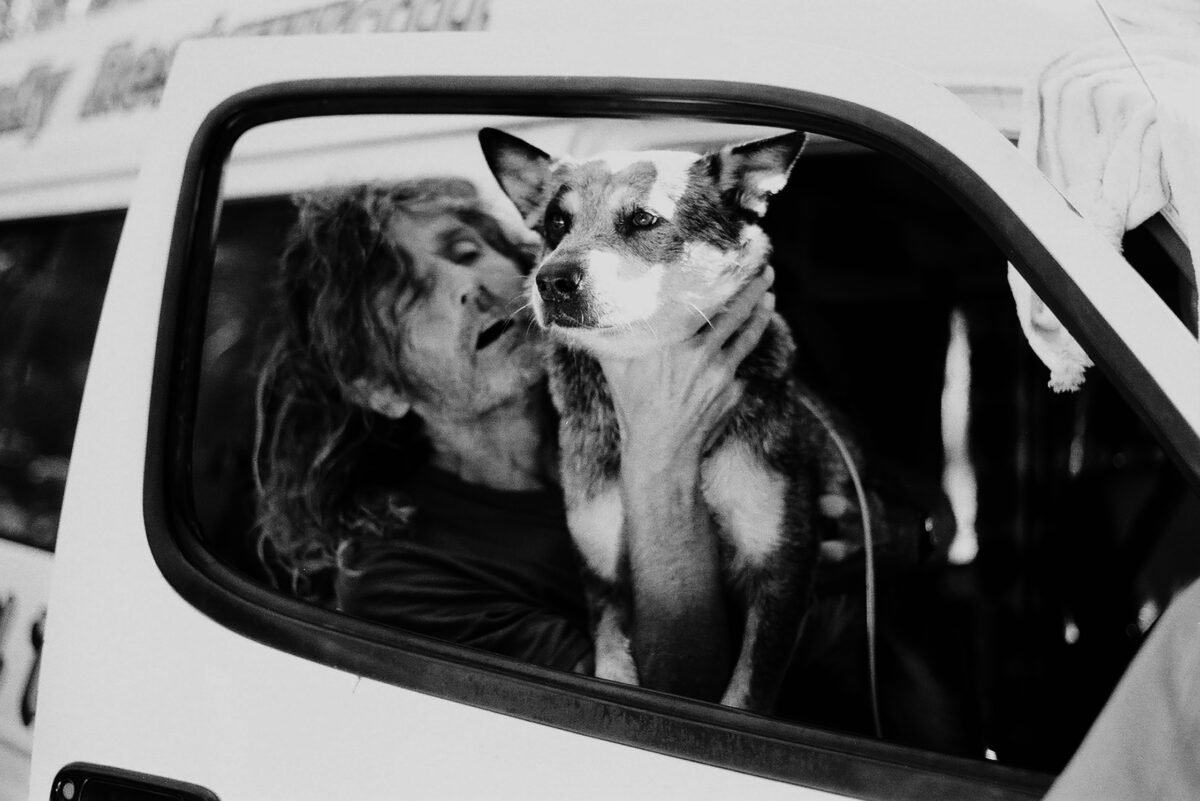
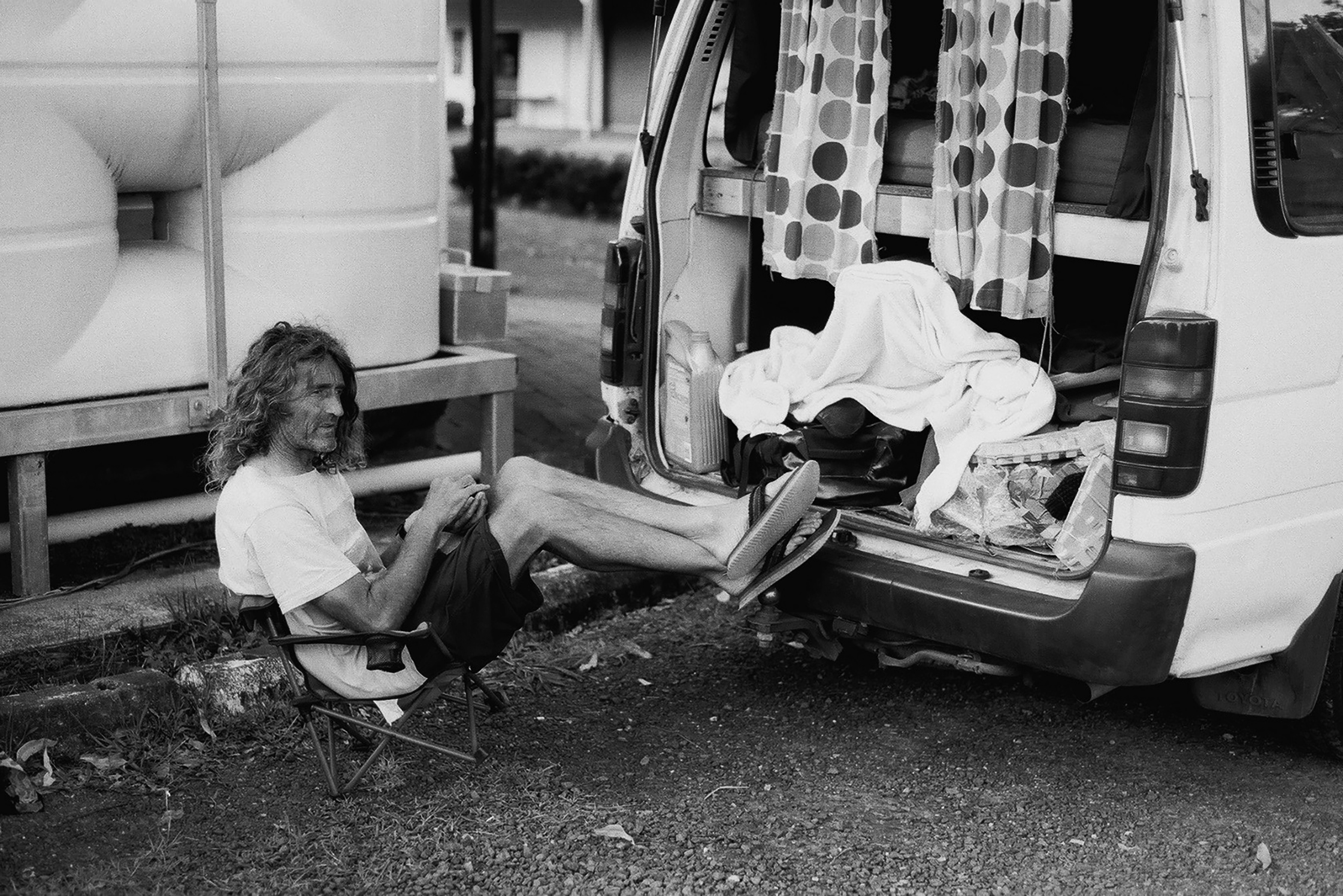
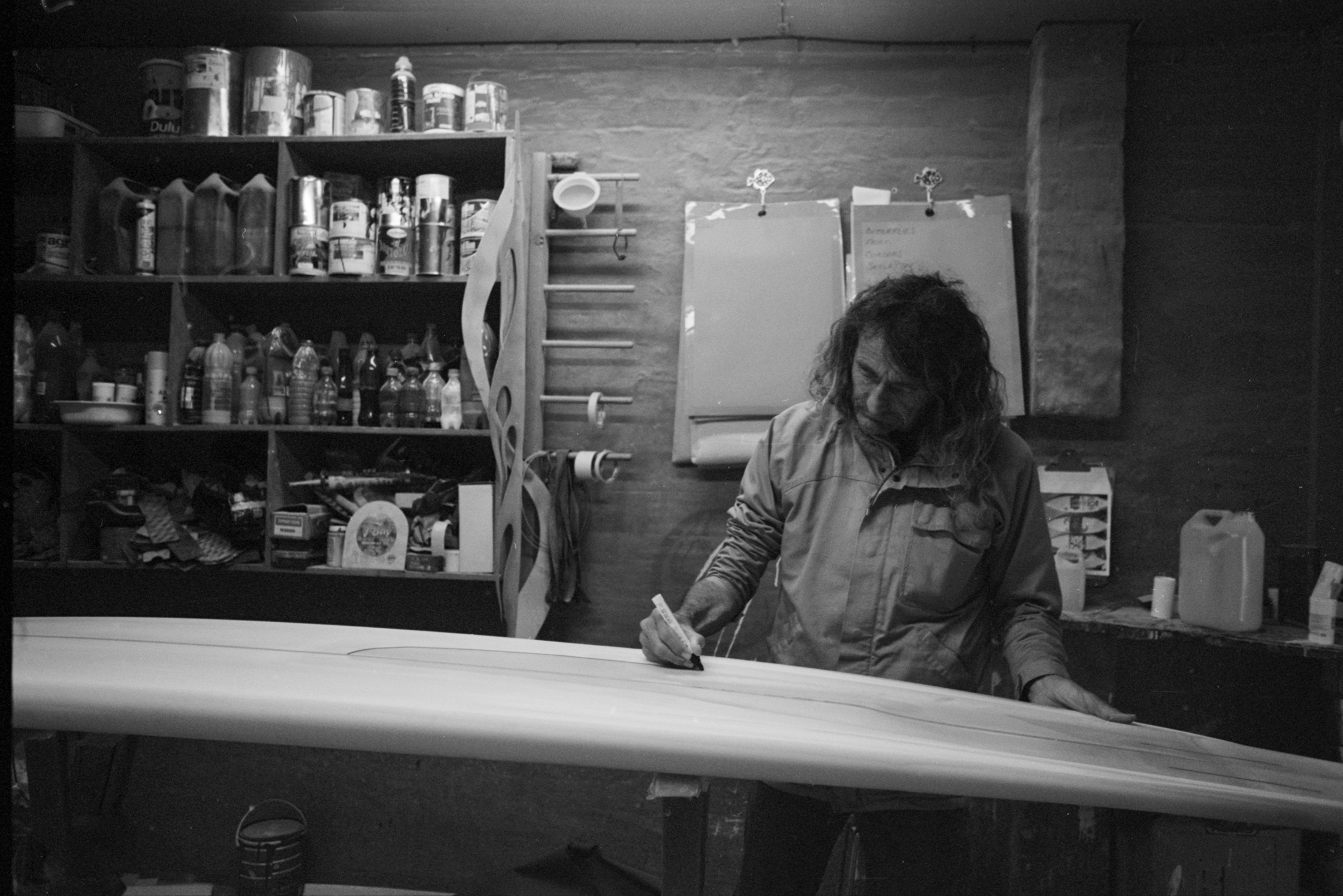
“The gamble is not knowing whether it’ll be heaven or hell when that wall of foam comes towards you.”
-
Rusty, can you tell us about surfing Uluwatu on the island of Bali for the very first time?
D: Did you know what to expect?
R: Well Albe [Albe Falzon- filmmaker who documented Uluwatu for the first time in the seminal film Morning of the Earth in 1971] thought he saw surf down there off the cliffs. So we hiked across and up on the ridge and looked over and saw this big left peeling down.
D: What did it look like? What did it feel like? And did you know how big it was?
R: Ahh, yeah it looked clean and big in size, hard to tell exactly. But it was pretty good. We spent two days venturing out there with all this equipment, the four of us—David, Albe, Steve, myself [surfers and filmmakers of Morning of the Earth]—tripod camera, food and stuff. So we went down this dry canyon and there was this ladder ’cause there were fishermen back then. On low tide they’d harvest the fish and they had wires from the top like a flying fox to bring fish up and down. And so we went down, and Steven and I went out. I was a big wave rider from Hawaii but I didn’t have all my mates with me like in Hawaii, so I had to make all these decisions and I had this 15-year-old surfer with me. So we’re walking out looking at the reef. And that happens to be the logo/film art for Morning of the Earth.
D: First wave—who rode it?
R: Well, years ago Steve Cooney came out saying that he caught the first wave but I don’t remember that sorta stuff…
D: Set the record straight.
R: [laughs] Well, David Elfick who was owner of Tracks Magazine [influential surf mag in Australia in the 1970s] came out with an article in November, we went in September-October, for the original Tracks, saying that Rusty caught the first wave. So Steven was saying that he was the first but I thought it was like Edmund Hillary and Tenzing Norgay—they never said ‘I got to the top first’! They made that agreement. I always felt with Steven that we were the first one. Then Steven said, ‘I was the first one’ so I had to go, ‘No, no, no, no…according to David Elfick I was the first.’ That was funny. Anyways, the repercussions of that film were phenomenal. It was the timing. So many people have come up to me and said, that film changed my life!
-
Looking to the future; How do you view Kelly Slater’s wave design project? An affront to some sacred element in surfing or an exciting prospect?
D: Well, it’s difficult to find a sacred element of surfing that’s left. It’s been so homogenized the whole way through. But yes, there’s a massive future for wave pools if surfing becomes an Olympic sport. The future will evolve into one man’s ugly pie but treated by others as a wonderful Cirque du Soleil.
R: Ha, I saw the thing and it’s a direction of where capitalism and science is taking us. But as to the sacredness of surfing versus the sacrilege, I think both will exist. There will always be purists. Like there was tow-in surfing and now there’s paddle-in big waves. The rules at Pe’ahi or Jaws [big wave surf spot on Maui] is like the paddle-in guys can take off in front of the tow-in as they’re ‘pure’. So there’s a purity in that. And there’s gonna be that pure versus non-pure all the time, and I think it’ll take some form in that respect. I’d certainly be interested in trying Kelly’s wave. It’d be interesting.
D: I think it looks like a piece of shit myself. It’d take a very skilled attitude—the pressure of taking off on a wave you’re paying for and not stuffing it up!
R: But it’s symbolic of where mankind is, actually. It’s paid for…
